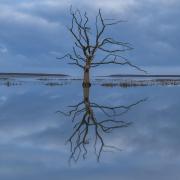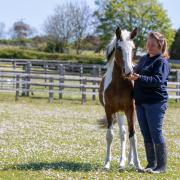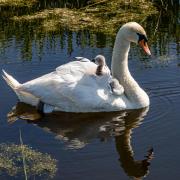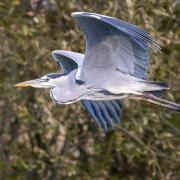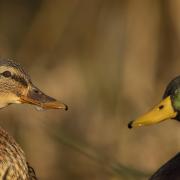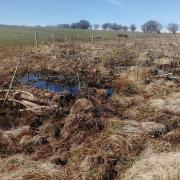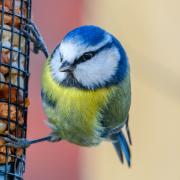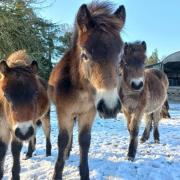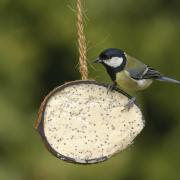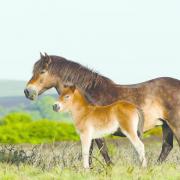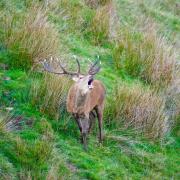Somerset Life asked Iain Porter, acting AONB Manager, the question:
"How can Quantock wildlife provide a local solution to a global issue?"
During 2010, the International Year of Biodiversity, much has been done to raise the issues of biodiversity loss. It culminated in the UN Biodiversity Convention that took place in Nagoya, Japan, where delegates were shown the stark failure of states to substantially reduce the rate of loss of biodiversity. A UN publication, The Global Biodiversity Outlook, indicated that virtually all trends spanning the state of the natural world were heading downwards, and for the first time there was an appreciation that these downward trends are having a negative impact on living standards and are hurting societies.
However, there is now a new draft agreement which, at its heart, has the core belief that if governments understand the financial costs of losing nature, they can adopt new economic models that reward conservation and penalise degradation. This idea of ‘ecosystem services’ has been hard to understand due to the complexity of the maths behind it, but essentially it aims to put a price on the natural environment and what it provides. For example, a study on the conversion of mangroves to commercial shrimp farming in southern Thailand estimated the net economic returns at $1,122 per hectare per year. This is a clear benefit if you are a shrimp farmer. But if we look at the wider costs of the conversion a different conclusion is reached. The economic benefit of collecting wood from the mangroves, providing nurseries for offshore fisheries, and protection against storms, totals $10,821per hectare, far outweighing the benefits of converting them into a shrimp farm. (teebweb.org)
In particular, this has been looking at the long-eared owl, a secretive bird which is scarce throughout the UK but likes living in conifer woodland and heathland
So how is this affecting the Quantock Hills? Well, we are eagerly awaiting the Natural Environment White Paper, due to be published in spring 2011, which will outline the government’s response to the issue of biodiversity loss. We have also been very busy monitoring and surveying a large number of species which are important to the Quantock Hills. This work will help to inform the policymakers as well as provide evidence when we look at management of the AONB on a landscape scale. The AONB service, through Ranger Andy Harris, has been undertaking pied flycatcher monitoring for many years. There are now 150 boxes that Andy monitors each spring and in most years the majority of birds they find are blue and great tits but other species such as nuthatch, wren, redstart, marsh tit and grey wagtail have all used the boxes. However, it is the pied flycatcher that is of particular interest. The pied flycatcher is a small migratory bird that travels to our woodlands from south of the Sahara desert. The male is black and white, whilst the female is browner with a white patch on the wing. A typical brood would be around seven young, and over the summer Andy will put a ring over one leg of each bird. The rings in no way harm or affect the birds but allow scientists and us to follow their movements should they ever be re-caught. For instance, a pied flycatcher that Andy ringed as a chick on the Quantock Hills in June 2008 was retrapped in June 2009 in a wood in Hereford, proving that they don’t return to the same woods each year. Through monitoring of the pied flycatcher we will be able to see any effects of climate change and also adapt management of the woodlands to improve the habitat for them.
Another bird we are interested in is the nightjar. Again, like the pied flycatcher, it is a summer visitor to the Quantock Hills and prefers the heaths and forests in which to breed. The nightjar is a charismatic bird, with the male ‘churring’ at dawn and dusk to attract the attention of the female. By monitoring numbers we are able to see whether the heathland is in good condition. Thankfully numbers have remained at a good level.We have been working with Chris Sperring from the Hawk and Owl Trust on a community owl project for the last three years. In particular, this has been looking at the long-eared owl, a secretive bird which is scarce throughout the UK but likes living in conifer woodland and heathland. The Quantock Hills should provide a wonderful habitat for the long-eared owl yet records are relatively low. A first step to encourage the owls has been the installation of owl baskets at key points throughout the Quantock Hills, and Ranger Andy Harris will continue to monitor these to see if they will provide the ideal home for long-eared owls.
“It is the pied flycatcher that is of particular interest. The pied flycatcher is a small migratory bird that travels to our woodlands from south of the Sahara desert
Moving away from birds, the AONB Service has also been involved with adder and bat surveys this year. The adder, the UK’s only venomous reptile, can be found on the heathlands of the Quantock Hills, and a local expert, Kevin Palmer, has been studying them for the last two years. The population and distribution of the adder is a good indication of the ‘health’ of the heathland, and this work is ongoing so we can inform future management. For the first time this year the AONB service also helped the Somerset Bat Group with a Bechstein bat survey. This was part of a national survey which aimed to provide more information on this little-understood bat. Though we did not find any Bechsteins we did find a number of other species, and the survey has expanded our knowledge of bats in the Quantock Hills. We are hoping to attract funding for a project to extend this work as well as raise the profile of the importance of bats in habitat management.It must be stressed that all of this work would not have been possible without the huge effort of volunteers, not just from the Quantock Hills AONB but also from many other organisations. I am always amazed by the number of people who come out, no matter what the time or weather, to support us in our work. There is also a growing involvement from local communities who want to get involved, and whilst we can we will aim to provide the opportunity to participate in projects throughout the Quantock Hills AONB. While we are still totting-up all the figures from all the surveys there is a feeling that, while globally things could be better, on the Quantocks there is a good level of management and involvement from organisations, landowners, volunteers and local communities, to ensure that wildlife will continue to flourish. For more information visit quantockhills.com



